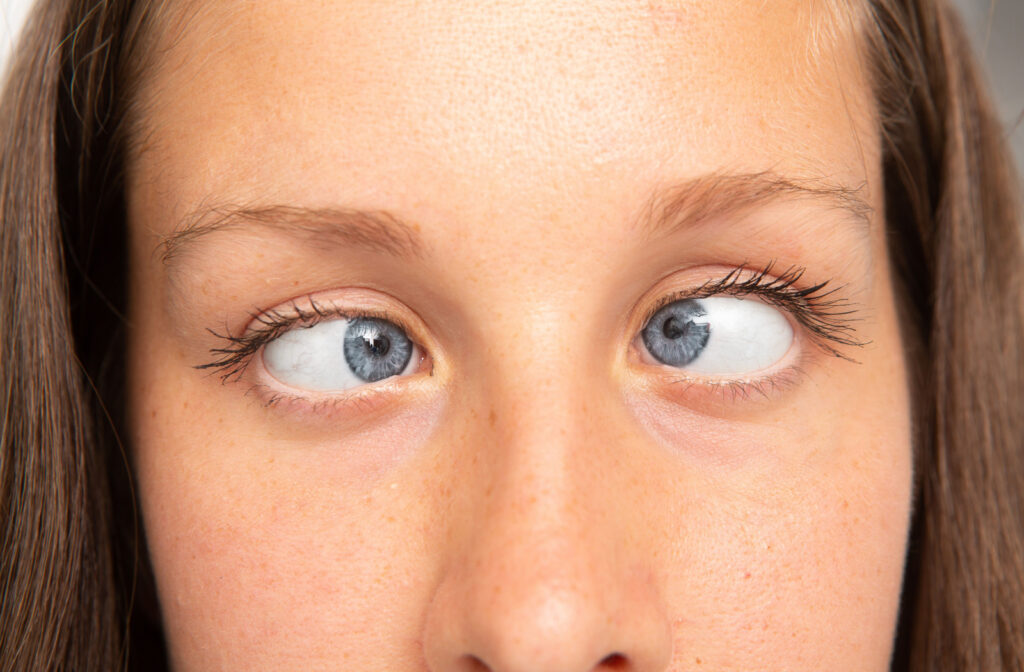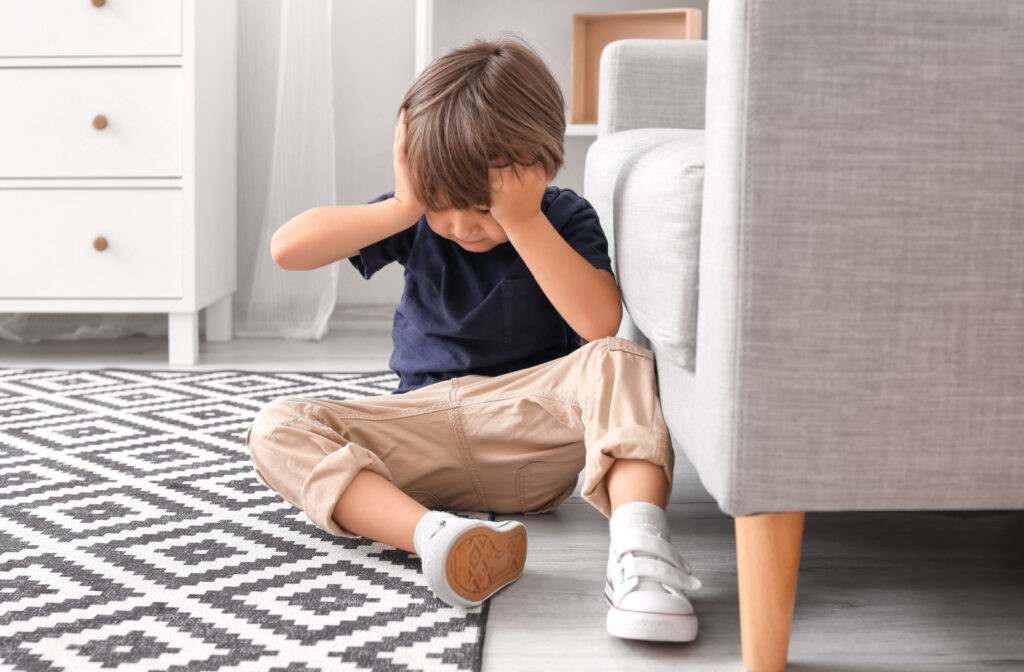Double vision can affect individuals of all ages, including children. If your child is experiencing double vision, it means that they are seeing two images instead of one. This can include seeing duplicated or overlapping images, and it can cause significant visual discomfort.
Double vision is most often a sign of another underlying condition. If your child is reporting visual disturbances, including double vision, it’s important to seek the help of their eye doctor. An eye doctor can identify the underlying cause of double vision and prescribe your child the necessary treatment to help restore vision and support their eye health.
What Is Double Vision?
Double vision, medically known as diplopia, is a visual occurrence in which you see two images instead of one. Double vision may look different for everyone. Images may appear duplicated or overlapped, and they may appear horizontally (side by side) or vertically (stacked).
To see normally, your eyes, muscles, nerves, and brain must work together to create a single image of your visual field. However, if there is a problem with any of these parts, you may experience double vision.
What Are the Signs & Symptoms of Double Vision in Kids?
Some kids, especially young kids, may have trouble vocalizing when they experience vision problems. As a parent or caregiver, there are signs that you can watch out for that may indicate your child is experiencing visual disturbances, including double vision.
Signs that your child may be experiencing vision problems include:
- Frequent eye rubbing or blinking
- Frequent headaches
- Covering one eye
- Squinting or narrowing eyes
- Complains of discomfort or fatigue
Watching out for these signs and keeping your child up-to-date with yearly eye exams is the best way to support healthy vision during these critical developmental years.
Causes of Double Vision in Kids
Double vision can be caused by a wide range of conditions, not just eye problems. Double vision can also indicate problems with muscles, nerve function problems, and even brain issues.
Some potential causes of double vision in kids include:
- Refractive errors
- Amblyopia
- Strabismus
- Neurological conditions
Refractive Errors
One of the primary causes of double vision in children is refractive errors, such as myopia (nearsightedness), hyperopia (farsightedness), or astigmatism. When the shape of the eye prevents light from focusing correctly on the retina, it can lead to blurry vision, eye strain, and, in some cases, double vision.
Your child’s eye doctor can identify refractive errors during a routine eye exam. Their eye doctor may prescribe eyeglasses or contact lenses, which can correct vision problems and alleviate double vision.
Amblyopia
Double vision may indicate that your child is experiencing a vision problem called amblyopia (lazy eye). Amblyopia usually occurs when one eye has significantly poorer vision than the other, and the brain increasingly relies on the stronger eye to produce images. This often leads to the weaker eye’s vision continually decreasing over time.
Amblyopia can be caused by untreated refractive errors or strabismus (crossed eyes). Early diagnosis and treatment are essential for preventing permanent vision loss for children with the condition.
Strabismus
Strabismus (crossed eyes) is another leading cause of double vision in children. When the eyes fail to work together and coordinate properly, they point in different directions, resulting in the brain receiving conflicting visual inputs. The brain then attempts to make sense of these conflicting images, which can lead to double vision.
Various factors, including muscle imbalances, nerve abnormalities, or genetic predisposition, can cause strabismus. Early intervention, such as patching, vision therapy, or surgery, may be necessary to realign the eyes and restore normal vision. Prompt treatment is essential to prevent potential vision development issues.
Neurological Conditions
Double vision in children may also be a symptom of certain neurological conditions. Conditions such as brain tumors, head trauma, or stroke can disrupt the normal functioning of the visual system, leading to double vision.
While these conditions are less common among children, it is still important to be aware of them as a parent or caretaker. Underlying neurological conditions often require immediate medical attention and specialist care.
Diagnosis may involve neurological examinations, imaging tests, and collaboration between your child’s eye care team and a neurologist. Early detection and intervention are crucial for managing these conditions and preventing further complications.

Diagnosing Double Vision in Kids
If your child is complaining of double vision or exhibiting signs of a vision problem, you should seek the help of an eye care professional immediately. Fortunately, double vision in children is often caused by a treatable eye condition. However, early diagnosis and treatment are still essential to promoting your child’s healthy development and preventing further vision problems.
Double vision can most often be identified during a routine eye exam. During this exam, an eye doctor will complete a series of tests to evaluate your child’s vision, eye structures, and ocular health. Depending on the cause of your child’s double vision, they may require additional appointments with an eye care or neurological specialist.
Quality Eye Care for Your Family
At Family EyeCare Center, our team is dedicated to providing quality eye care to your family. Our office proudly offers comprehensive children’s vision care, including eye exams and vision therapy options. Contact our office to book your appointment today!



